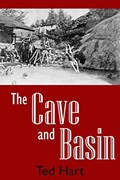Narrow Results By
Castle in the wilderness : the story of the Banff Springs Hotel
https://archives.whyte.org/en/permalink/catalogue24950
- Medium
- Library - Book (including soft-cover and pamphlets)
- Published Date
- 2019
- Author
- Robinson, Bart
- Publisher
- Banff, AB : Summerthought Publishing
- Edition
- 1st Edition
- Call Number
- 08.5 R55c
1 website
- Author
- Robinson, Bart
- Responsibility
- Bart Robinson
- Edition
- 1st Edition
- Publisher
- Banff, AB : Summerthought Publishing
- Published Date
- 2019
- Physical Description
- 160 p.; illus.
- Subjects
- Hotels
- History
- Travel
- Tourism
- Banff Springs Hotel
- Canadian Pacific Railway
- Canadian Pacific Railway Company
- Canadian Pacific Railway Hotels
- Abstract
- A Castle in the Wilderness: The Story of the Banff Springs Hotel is the definitive historical record of one of the world’s most famous mountain resorts. The story navigates the hotel’s early history from its construction by the Canadian Pacific Railway to the glittering era of the 1920s through to the changes of modern times. Local author and historian Bart Robinson has been exploring and writing about the Banff Springs Hotel since the 1970s. In A Castle in the Wilderness he combines a complete hotel history with rich anecdotes and snippets of the past that have enriched Banff and indeed Canada, from the hotel’s links to the construction of the transcontinental rail line to the visits of maharajahs and movie stars.How did such a gracious hotel come to be in the wilds of the Canadian Rockies? How much did it cost to build? Who designed it? Who selected its furnishings? Which famous visitors has it hosted? And why is now known as the Fairmont Banff Springs? These and many more questions are answered in the Castle in the Wilderness. (from publisher's website)
- Contents
- Introduction
- Origins of a Hotel
- Grand Designs
- Vistas and Vendettas
- Growing Pains
- Towers and Troubles
- Princes and Politicians
- Out of the Fire
- A Brief But Golden Moment
- Tribulations and Triumph
- A Second Century
- Into the New Millenium
- Appendix
- Bibliography
- Index
- Credits
- Acknowledgements
- About the Author
- ISBN
- 9781926983356
- Accession Number
- 2019.89
- Call Number
- 08.5 R55c
- Collection
- Archives Library
- URL Notes
- Link to publishers website where publication can been purchased
Websites
This material is presented as originally created; it may contain outdated cultural descriptions and
potentially offensive content.
Read more.
The Cave and Basin : Banff's hot springs and the birth of Canada's national parks
https://archives.whyte.org/en/permalink/catalogue25251
- Medium
- Library - Book (including soft-cover and pamphlets)
- Published Date
- 2017
- Author
- Hart, E.J. (Ted)
- Publisher
- Banff, AB : Summerthought Publishing
- Call Number
- 08.3 H11c
1 website
- Author
- Hart, E.J. (Ted)
- Responsibility
- Ted (E.J.) Hart
- Publisher
- Banff, AB : Summerthought Publishing
- Published Date
- 2017
- Physical Description
- 91 pages
- Abstract
- THE CAVE AND BASIN by Ted Hart is the story of mineral springs in Banff National Park that were instrumental to the growth of Banff and formed the nucleus of Canada’s national park system. Authored by renowned historian E.J. (Ted) Hart, Cave and Basin offers background on what is now protected as a national historic site, exploring the story of its discovery and the lives of those involved in its development as a world-famous attraction. It describes these unique and fascinating hot springs and how they became the catalyst for important developments in Canadian history and culture. The book details the story of the springs’ first discovery, their critical place in a government decision to create a reserve to protect them for public use and their development into a tourist location where generations of Canadians and those from around the world came to enjoy their soothing balm. In the process, the springs, and the Cave and Basin particularly, became the epicentre for both the creation and the commemoration of Canada’s national parks. (From publisher's website)
- Contents
- Introduction
- Chapter 1 - Sacred waters of the mountains
- Chapter 2 - Like some fantastic dream
- Chapter 3 - The hot springs investigation
- Chapter 4 - Recuperate the patients and recoup the treasury
- Chapter 5 - As near perfetion as it is possible to make
- Chapter 6 - Walter Painter's wonder
- Chapter 7 - Different guises
- Chapter 8 - Recent times
- Index
- Photo credits
- About the author
- ISBN
- 9781926983271
- Accession Number
- P2020.07
- Call Number
- 08.3 H11c
- Collection
- Archives Library
- URL Notes
- Publisher's website
Websites
This material is presented as originally created; it may contain outdated cultural descriptions and
potentially offensive content.
Read more.
The Great Glacier and its house : the story of the first center of alpinism in North America, 1885-1925
https://archives.whyte.org/en/permalink/catalogue20180
- Medium
- Library - Book (including soft-cover and pamphlets)
- Published Date
- 1982
- Author
- Putnam, William Lowell
- Publisher
- New York : American Alpine Club
- Call Number
- 01.4 P98t reference
1 website
- Author
- Putnam, William Lowell
- Responsibility
- Willaim Lowell Putnam
- Publisher
- New York : American Alpine Club
- Published Date
- 1982
- Physical Description
- 23 pages : illustrations, portraits, map
- Subjects
- Glacier House
- Illecillewaet Glacier
- Selkirk Mountains
- Railway routes
- Railway stations
- Railways
- Tourism
- Mountaineering
- American Alpine Club
- History
- Abstract
- he hotel is gone and the passenger trains, now rarely on time, go by only once daily. The Great Glacier has all but vanished. The motor traffic on the fast, modern highway sweeps past in ignorance that this deep, half-forgotten, Illecillewaet valley of the Selkirk Mountains, with its dark forests and glittering summits, was the cradle of professional North American mountaineering and, for several decades, the principal Canadian attraction for climbers from three continents. Surely the time has long since passed for someone to tell the story of the early days when geologists, scientists, alpinists, guides, tourists and more than a few of our continent’s empire builders stopped in Glacier, British Columbia to explore, study, climb, earn a modest living, admire the scenery or just rest from their labors. It is most appropriate that William L. Putnam, one of America’s outstanding experts on the Selkirks, should have undertaken the task of writing a history of the area. It is even more appropriate that this history should have been published by The American Alpine Club, whose first president, Professor Charles E. Fay, spent many sunny days over several seasons scaling the region’s unclimbed summits and, as we learn from the text, many rainy weeks in the Old Glacier House where at idle moments he amused himself by analyzing the comments in the hotel’s guest register. The author has labored hard and gone to great lengths to obtain original source material and to check facts. As might be expected, his story begins with the construction of the Canadian Pacific track through Roger’s Pass; without it, the central Selkirks and the outstanding Matterhorn-like crest of Mount Sir Donald would no doubt still be little known and less visited. The absence of dining cars on the early transcontinental express trains, plus the superb view of what was then the awesome Illecillewaet Glacier, led to the building of a small restaurant-hotel by the track some five miles west of the pass. In time that hotel grew to become the Canadian Pacific’s western show-piece. Tourists, scientists, mountaineers and guides arrived in growing numbers. The peaks were measured and climbed, trails were built, caves explored and an electric generator was constructed to light the premises. A pet bear was even provided on the grounds for the entertainment of guests. Then, slowly, the Great Glacier retreated, the railroad was modernized and rerouted through a five-mile tunnel some distance from the hotel, tourists and climbers alike went off to war on the battlefields of France, and the Canadian Pacific shifted its emphasis to its latter-day attraction at Lake Louise in the nearby Rockies. The old hotel was closed, then torn down, and the valley and its glacier almost forgotten. Such is the skeleton of Putnam’s story. But it is far more. Putnam has labored industriously. He has unearthed, and quoted at length, the original on-the-spot observations of the early visitors in the decades between 1890 and 1920. He has recovered ancient photographs, many excellent, to illustrate the stories and anecdotes he recounts. Thanks to his labor of love, those of us who are familiar only with modern mountaineering now have the opportunity to learn what climbing was like in the good old days around the turn of the century. Despite its deceptive scrapbook style, the work is scholarly. It is also highly nostalgic. The author is at his best with the history of the early climbing. One wishes he had personally said more and quoted less—but, then, many of the quotations are memorable. He might also have omitted, or at least modified, the chapter on distant Mount Sir Sandford, for its story, while essential in any broad account of Selkirk climbing, belongs elsewhere and shifts the focus away from the House and the Glacier at the very moment when the reader has become engrossed in both. But these, however, are minor flaws, overshadowed by good research, an entertaining style, excellent history and magnificent illustrations. Samuel H. Goodhue (from American Alpine Club)
- Contents
- Introduction
- The Railroad Track
- The House
- The Tourists
- First Climbers
- Men of Science
- Alpina Americana
- Britannic Majesty
- Canadians at Last
- Some of the Best
- The Last Big Mountain
- The Rest is Silence
- Appendices
- A: The Guides
- B: Place Names in the Central Selkirks
- Bibliography
- Index
- Notes
- Signed by author - addressed to Hans Gmoser
- ISBN
- 0930410130
- Accession Number
- AC637
- Call Number
- 01.4 P98t reference
- Collection
- Archives Library
- URL Notes
- Link to book review on American Alpine Club website
Websites
This material is presented as originally created; it may contain outdated cultural descriptions and
potentially offensive content.
Read more.
Thumbing a ride : hitchhikers, hostels, and counterculture in Canada
https://archives.whyte.org/en/permalink/catalogue24955
- Medium
- Library - Book (including soft-cover and pamphlets)
- Published Date
- 2018
- Author
- Mahood, Linda
- Publisher
- Vancouver ; Toronto : UBC Press
- Call Number
- 02.4 M11th
1 website
- Author
- Mahood, Linda
- Responsibility
- Linda Mahood
- Publisher
- Vancouver ; Toronto : UBC Press
- Published Date
- 2018
- Physical Description
- Description:xii, 331 pages : illustrations, portraits
- Abstract
- In the 1920s, as a national network of roads and youth hostels spread across Canada, so did the practice of hitchhiking. By the 1960s, the Trans-Canada Highway had become the main thoroughfare for thousands of young baby boomers seeking adventure. Thumbing a Ride examines the rise and fall of hitchhiking in the 1970s, drawing on records from the time. The Trudeau Liberals responded to youth unemployment by subsidizing a network of hostels to make travel an educational adventure, and many equated hitching and hostelling with the freedom to do their own thing. At the same time, a counter-narrative emerged, of girls gone missing and other dangers. Town councillors, community groups, and motorists called for a nationwide clampdown on a transient youth movement that they believed was spreading hippie sensibilities and anti-establishment nomadism. Hitchhiking is a ritual that requires trust, boundary negotiation, and control. Neither the identity of the hitchhiker nor the motives of the motorist can be determined in advance. Linda Mahood unearths good and bad stories and key biographical moments that formed young travellers’ understandings of personal risk, agency, and national identity. Thumbing a Ride asks new questions about hitchhiking as a rite of passage, and about adult interventions that turned a subculture into a pressing moral and social issue. This book will appeal to students and scholars of history, sociology, and social policy. It will also find an appreciative audience among baby boomers who recall the transient youth movement. (from publisher's website)
- Contents
- List of Illustrations
- Acknowledgements
- Get your Motor Running: Risk, Ritual, and Rite of Passage Travel
- Thumb Wars: Adventure Hitchhiking
- Rucksack Revolution: Quest in the Age of Aquarius
- Cool Aid: The Transient Youth Movement
- Crash Pads: Blue-Jean Bureaucrats versus the Canadian Youth Hostels Association
- Head Out on the Highway: Stories from the Trans-Canada Highway
- Car Sick: Hitchhiking Dos and Don'ts
- Conclusion: The Vanishing Hitchhiker Eulogy
- Notes
- Index
- ISBN
- 978077483733
- Accession Number
- P2019-30
- Call Number
- 02.4 M11th
- Collection
- Archives Library
- URL Notes
- Publisher's website
Websites
This material is presented as originally created; it may contain outdated cultural descriptions and
potentially offensive content.
Read more.




